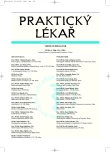Head lice is still actual
Veš dětská je stále aktuální
Výskyt vši dětské (Pediculus capitis) se v posledních letech výrazně zvyšuje ve všech rozvinutých zemích. Česká republika není výjimkou. Za příčinu je považována rezistence vší k insekticidům, které se používají k jejímu potlačování. U nás byla již v roce 1992 prokázána in vitro testy rezistence k permethrinu a v roce 2004 rezistence k malathionu, což jsou celosvětově nejužívanější insekticidy proti vši dětské. Rezistence byla příčinou ztráty účinnosti v té době dostupných odvšivovacích přípravků (Orthosanu BF 45, Diffusilu H a Diffusilu H 92 M). V současné době je u nás povolen odvšivovací přípravek Diffusil H Forte, obsahující carbaryl, který je plně účinný a proti němuž byly zaznamenány ojedinělé případy rezistence zatím jen ve Velké Britanii. Dalším povoleným přípravkem je odvšivovací šampon Parasidose Shampooing, obsahují d-phenothrin, u kterého autoři tohoto článku předpokládají účinnost proti některým populacím vší. V další části autoři uvádějí nejnovější údaje o taxonomii a biologii vši dětské a diskutují nové možnosti a alternativní způsoby odvšivování.
Klíčová slova:
Veš dětská, Pediculus capitis, systematika, výskyt, odvšivování.
Authors:
V. Rupeš 1; J. Vlčková 2
Authors‘ workplace:
Státní zdravotní ústav, Praha
Ředitel: MUDr. J. Volf, Ph. D.
1; Zdravotní ústav se sídlem v Olomouci
Ředitelka: RNDr. D. Dvorská
2
Published in:
Prakt. Lék. 2007; 87(6): 333-338
Category:
Various Specialization
Overview
Over the past years, head louse (Pediculus capitis) has been found with increasing frequency in all developed countries. The Czech Republic is not an exception. The cause is resistance to insecticides used for the control of head lice. In the Czech Republic, resistance of lice to permethrin was detected by in vitro tests in 1992 and resistance to malathion was reported in 2004. The two active ingredients have been used worldwide for the control of head lice. The resistance of lice was the cause of failure of the then available Czech delousing products (Orthosan BF 45, Diffusil H and Diffusil H 92 M). Diffusil H Forte is currently authorized for use in the control of head lice in the Czech Republic. The active ingredient of this formulation is carbaryl that proved fully effective. Another authorized product is Parasidose Shampooing containing dphenothrin as the active ingredient, expected to be effective against some populations of lice. The most recent data on the taxonomy and biology of the head louse are presented and new possibilities and alternative strategies for the control of these parasitic insects are discussed.
Key words:
Head louse, Pediculus capitis, taxonomy, incidence, delousing.
Labels
General practitioner for children and adolescents General practitioner for adultsArticle was published in
General Practitioner

2007 Issue 6
- Metamizole vs. Tramadol in Postoperative Analgesia
- Memantine in Dementia Therapy – Current Findings and Possible Future Applications
- Metamizole at a Glance and in Practice – Effective Non-Opioid Analgesic for All Ages
- What Effect Can Be Expected from Limosilactobacillus reuteri in Mucositis and Peri-Implantitis?
- Hope Awakens with Early Diagnosis of Parkinson's Disease Based on Skin Odor
Most read in this issue
- Examination of the scene of death in a hanging
- Adverse effects of antipsychotic drugs: new risks and how to identify them
- Sleep related breathing disorders in adults
- Oral Hygiene – Related Quality of Life
